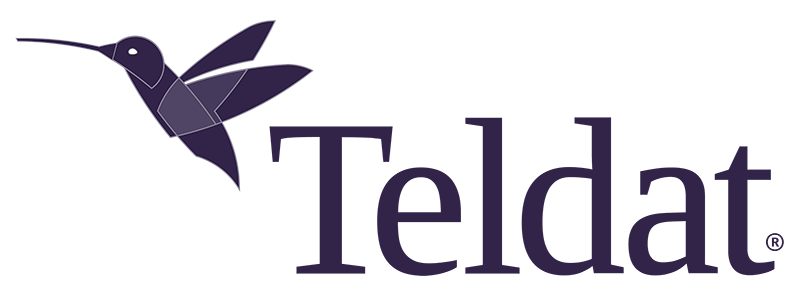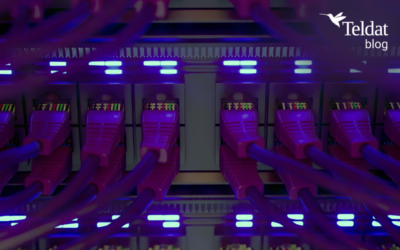SDE-20K FAQs
FAQs
1. Which is the market target of SDE-20k?
2. What are the SDE-20k architecture?
3. Does SDE-20k support high availability?
4. Does Teldat SD-WAN solution support more than one datacenter in the same SD-WAN network?
5. Is the SDE-20k a multi-tenant device?
6. Can SDE-20k family be managed by Cloud NetManager?
7. Does SDE-20k family support Zero Touch Provisioning (ZTP)?
8. Does SDE-20k support horizontal scalability?
9. The SDE-20k will be designed with, 1G or 10G ports?
10. ”Teldat Reverse Traffic Steering” is a functionality of the SD-WAN solution that is implemented also in SDE-20k. Will be this functionality supported for all the Teldat devices in a SD-WAN network?
11. SDE-20k is a new device family, but, is it based on standard protocols, as other Teldat products?
12. Will be released a virtual solution of SDE-20k in the future?
13. Are there any proactive options you can use to detect specific or unusual traffic conditions?
14. Which are the security features implemented in SDE-20k?
15. What inspections possibilities are possible when SAP is used?
1. Which is the market target of SDE-20k?
SDE-20k is exclusively designed to work as a Datacenter Edge device in the Teldat SD-WAN solution. It’s specially focused in scenarios where the bandwidth required at datacenter side is high, supporting up to 20Gbps aggregated traffic in one device.
As SDE-20K is a product family, there are different devices for different network scenarios:
- Up to 2Gbps à SDE-20000
- Up to 10Gbps à SDE-22000
- Up to 20Gbps à SDE 24000
2. What are the SDE-20k architecture?
SDE-20K is mainly compounded by two elements:
- Hardware: server based on X86 architecture. DELL is the hardware provider selected, it guarantees the hardware performance to provide a high-quality product.
- Software: operating system based on Linux with Teldat specific developments to guarantee the quality and performance of the device. The operating system name is OpenSDx.
SDE-20K is commercially available as an integration of software and hardware, Teldat provides the server with the software loaded and running in the device.
In the near future, Teldat will release an ‘only software’ solution, which can be installed in x86 servers.
3. Does SDE-20k support high availability?
Yes, SDE-20K supports the same high availability architecture as the rest of datacenter edge devices in Teldat portfolio.
The Datacenter Edge device is a key component in the SD-WAN solution, the connectivity between users and applications must be assured. For that, it’s necessary to provide a high available solution.
The CNM user can configure easily the high availability architecture of the datacenter devices. They are deployed in pairs, and in the case one of them crashes or is unavailable, the other is able to manage all the traffic going in/out of the datacenter.
This architecture guarantees the connectivity between users and applications.
4. Does Teldat SD-WAN solution support more than one datacenter in the same SD-WAN network?
Yes. From CNM, the user can configure the SD-WAN network with one or more datacenters.
The user just need to create and configure some parameters of the datacenter edge device to connect the remote offices to one or more datacenters in the network.
5. Is the SDE-20k a multi-tenant device?
No, SDE-20K is not multi-tenant. For each SD-WAN network (customer), at least a datacenter edge device is required.
This solution guarantees the isolation between different customers network.
6. Can SDE-20k family be managed by Cloud NetManager?
Yes, CNM is the central point to configure, manage and monitor the SDE-20K devices. It’s not possible to configure SDE-20K from any other point.
7. Does SDE-20k family support Zero Touch Provisioning (ZTP)?
Yes, it supports ZTP as the rest of SD-WAN devices.
The device can have a factory configuration, which allows to connect automatically to the CNM once it is plugged to the electrical power supply and connected to the access network.
Once the device contacts with CNM without manual intervention, the device is identified by its serial number and the CNM sends the specific configuration to the device, that has been generated with CNM Controller.
8. Does SDE-20k support horizontal scalability?
Yes. Two or more devices can be deployed in a SD-WAN network “in parallel”, this means that the devices are configured to receive the traffic for a set of remote office, so the total bandwidth supported in the datacenter, is the total bandwidth supported in all the devices.
This feature allows to increase the network bandwidth without substituting the installed devices.
9. The SDE-20k will be designed with, 1G or 10G ports?
SDE-20K is a family of products that groups different device models: SDE-20000, SDE-22000 and SDE-24000. Depending on the model, the devices have 1G and/or 10G ports. The devices have also different hardware resources as CPU, memory or disk, depending on the model.
10. ”Teldat Reverse Traffic Steering” is a functionality of the SD-WAN solution that is implemented also in SDE-20k. Will be this functionality supported for all the Teldat devices in a SD-WAN network?
Yes. This new technology is a different method to create the SD-WAN overlay. It reduces the number of tunnels generated in the network, and, in addition, it reduces the configuration complexity of the datacenter edge devices. It’s a technology that covers all the solution, so all the devices available for a Teldat SD-WAN network supports this technology.
11. SDE-20k is a new device family, but, is it based on standard protocols, as other Teldat products?
Yes, although SDE-20K is the first product developed based on Linux Operating System, it supports and uses standard protocols in the industry as BGP, IPSEC, DMVPN, IPSLA… which eases the maintenance and error resolution of the device.
12. Will be released a virtual solution of SDE-20k in the future?
Yes, this is the first version of SDE-20K, and the objective/strategy is to evolve the product to cover ‘only software’ solutions, in private virtual environments and in public cloud deployments.
13. What are the differences between SDE-20k and the rest of datacenter edge devices in Teldat portfolio?
SDE-20K is the first device developed in a Linux operating system. Although it’s based on an ‘opensource’ platform, some specific features have been included in the software to cover all the scenarios of the Teldat SD-WAN solution.
Furthermore, SDE-20K hardware is based on x86 servers. The hardware provider is DELL, which, as one of the top server providers in the market, guarantees the quality and performance of the hardware.
14. Which are the security features implemented in SDE-20k?
SDE-20K, as any other device in Teldat SD-WAN solution, includes important features to guarantee the communications security:
- The overlay is encrypted based on IPSEC protocol with AES-256
- The communication between the device and the CNM is done through HTTPS. CNM includes a certificate to identify itself with the devices, and the devices includes a certificate to be able to connect to CNM.
- The device is identified by serial number and a ‘digital verification code’ (DVC) in CNM.
15. Does SDE-20k family support different access networks connectivity with the same device?
Yes. SDE-20K supports Internet and MPLS access networks, and CNM can configure up to 4 different WANs.
The datacenter edge device must be connected to all the WANs that are in the SD-WAN network, to be able to connect with any remote office.
Read our latest Blog Posts
Security attacks on Supply Chains
In the digital age, supply chains are essential for the smooth functioning of businesses and the economy at large. Businesses increasingly rely on an interconnected ecosystem of suppliers, software and services to function. However, in recent years, we have witnessed...
The importance of sequencing power domains in electronics
There is a clear trend in the electronics industry for integration, allowing for more compact and efficient designs. More and more, electronics manufacturers are making their chips smaller, including more components within their chips and extending the feature range....
Switches: Stacking/grouping/virtualization techniques
This blog post is the first in a series in which we will analyze the most notable technologies that we should take into account when selecting switches. Its aim is not to give a comprehensive description or follow any “didactic” order. One of the main characteristics...






















